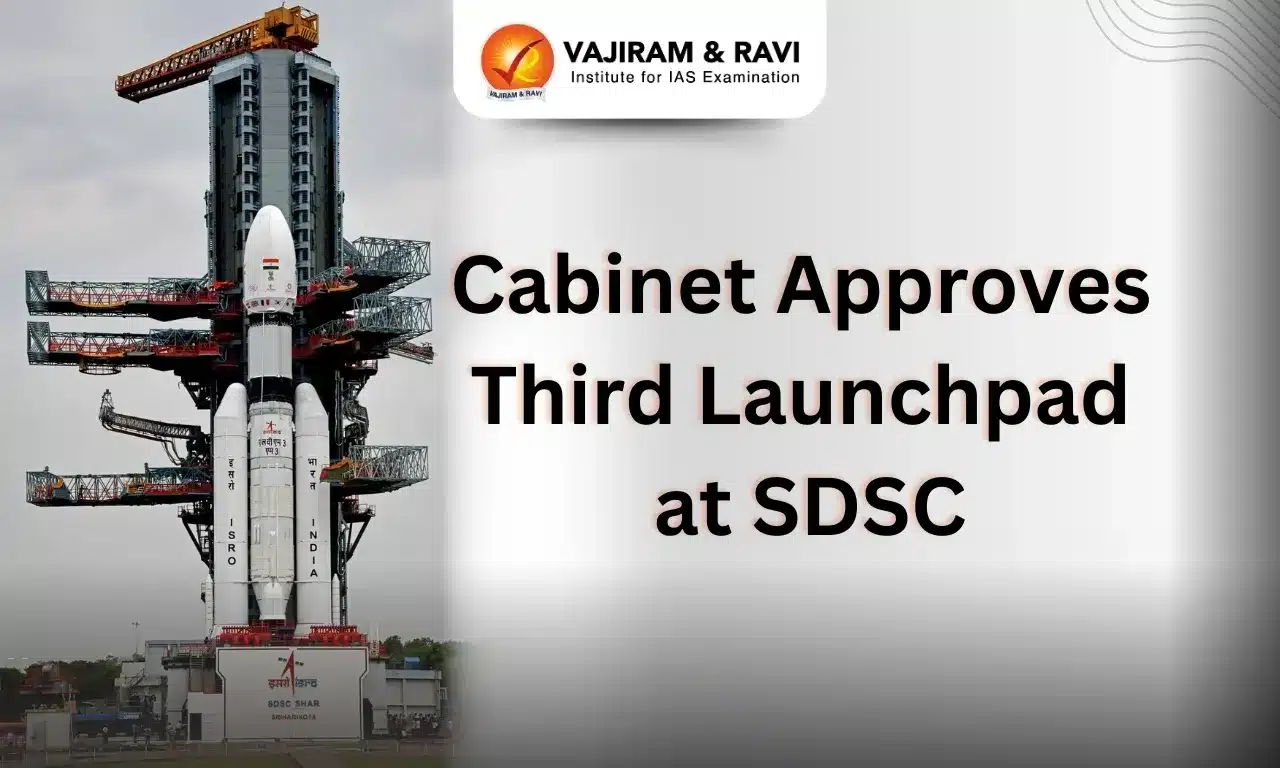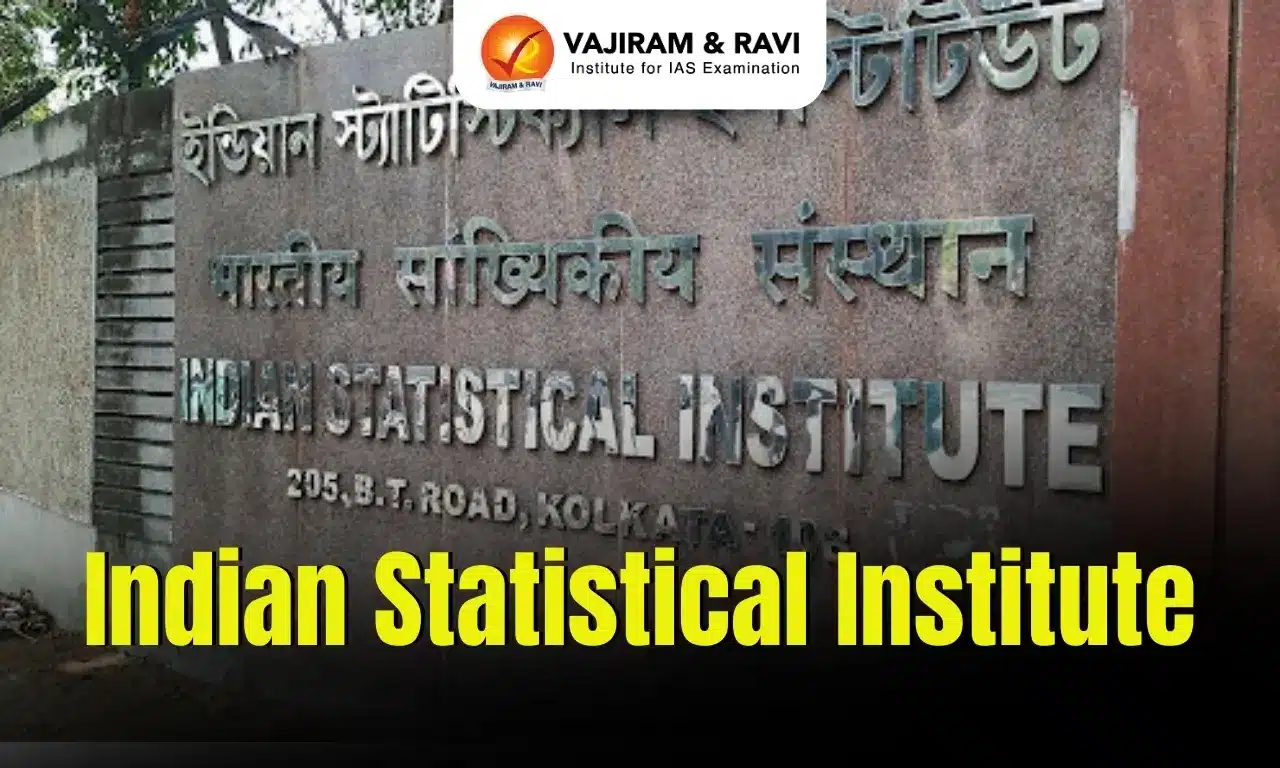What’s in today’s article?
- Why in News?
- Satish Dhawan: A Pioneer in Indian Space Science
- The Search for India’s Ideal Satellite Launch Site
- Why Sriharikota Was Chosen as the Launch Site?
- ISRO to Get a Third Launch Pad: Key Highlights
Why in News?
The Union Cabinet approved the establishment of a third launchpad at the Satish Dhawan Space Centre (SDSC) in Sriharikota, Andhra Pradesh, to support ISRO’s future use of the heavier Next Generation Launch Vehicle (NGLV).
SDSC, India’s sole spaceport, became operational in 1971 with the launch of the ‘Rohini-125’ rocket and was renamed in 2002 to honor former ISRO Chairman Satish Dhawan.
Satish Dhawan: A Pioneer in Indian Space Science
- Early Life and Achievements
- Born in Srinagar, Satish Dhawan was an eminent rocket scientist, hailed as the ‘Father of Experimental Fluid Dynamics research’ in India.
- He made significant contributions to the study of turbulence and boundary layers.
- Leadership at ISRO
- In 1972, Dhawan succeeded Vikram Sarabhai as the Chairman of ISRO.
- Under his leadership, India’s space program witnessed remarkable growth, including the development of operational systems like:
- INSAT: A telecommunications satellite.
- IRS: The Indian Remote Sensing satellite.
- PSLV: A launch vehicle that elevated India to a spacefaring nation.
- Legacy and Recognition
- After his passing in 2002, the space center at Sriharikota was renamed the Satish Dhawan Space Center to honor his transformative contributions to India’s space journey.
The Search for India’s Ideal Satellite Launch Site
- Search begins
- In the 1960s, India embarked on a mission to indigenously develop satellites and launch vehicles under the leadership of Vikram Sarabhai, the founder of the Indian space program.
- He tasked scientist EV Chitnis with finding a suitable launch site on the country’s east coast.
- Survey and Selection of Sriharikota
- In March 1968, information and maps of potential sites, including Sriharikota, were gathered.
- Quick Execution and Acquisition
- By August 1968, Sarabhai conducted a survey of Sriharikota.
- In October 1968, approximately 40,000 acres of land in Sriharikota were acquired, showcasing the remarkable speed and efficiency of the process.
Why Sriharikota Was Chosen as the Launch Site?
- Ideal Location on the East Coast
- Sriharikota’s position on the east coast allows rockets to be launched eastwards, leveraging Earth’s rotation for additional velocity.
- This provides a significant boost of about 450 m/s, increasing payload capacity.
- Proximity to the Equator
- Being close to the equator is advantageous for launching geostationary satellites, as they need to be in the equatorial plane.
- The closer the launch site to the equator, the more efficient the launch.
- Uninhabited and Sea Proximity
- Sriharikota’s sparsely populated area and proximity to the sea ensure a safe flight path over the ocean, where separated rocket hardware can fall without risks or constraints.
ISRO to Get a Third Launch Pad: Key Highlights
- Purpose of the Third Launch Pad (TLP)
- Designed to support Next Generation Launch Vehicles (NGLVs) and serve as a standby for the Second Launch Pad at Sriharikota, Andhra Pradesh.
- Will enhance India’s capacity for human spaceflight missions and space exploration.
- Timeline and Importance
- The project is of national importance and aims to be completed within four years (48 months).
- Expected to meet India’s evolving space transportation needs for the next 25-30 years.
- Versatile Configuration
- The TLP will have a universal and adaptable design to support NGLVs, Launch Vehicle Mark-3 (LVM3), and vehicles with semicryogenic stages.
- Capable of accommodating scaled-up configurations of launch vehicles.
- Boost to India’s Space Ecosystem
- The TLP will enable higher launch frequencies, strengthening the national space ecosystem.
- It will significantly enhance India’s capacity to undertake human spaceflight and exploration missions.
- Existing Launch Pads
- India currently operates two launch pads at Sriharikota:
- First Launch Pad (FLP): Supports PSL and SSL vehicles.
- Second Launch Pad (SLP): Functions as a standby for PSLVs and is being prepared for human-rated LVM3 for Gaganyaan missions.
- India currently operates two launch pads at Sriharikota:
- Future Scope
- The TLP project will ensure ISRO’s readiness for future demands, solidifying its role in advancing India’s space transportation capabilities.
Q.1. Why was Sriharikota chosen as the launch site for ISRO?
Sriharikota’s ideal location on the east coast provides a significant velocity boost due to Earth’s rotation. It’s close to the equator, making it efficient for launching satellites. Additionally, its sparsely populated area and proximity to the sea ensure a safe flight path for rockets.
Q.2. What will the third launchpad at Sriharikota support?
The third launchpad will support ISRO’s Next Generation Launch Vehicles (NGLVs) and human spaceflight missions. It will enhance the nation’s space transportation capacity, ensure higher launch frequencies, and serve as a backup for the existing launch pads at Sriharikota.
Last updated on November, 2025
→ Check out the latest UPSC Syllabus 2026 here.
→ Join Vajiram & Ravi’s Interview Guidance Programme for expert help to crack your final UPSC stage.
→ UPSC Mains Result 2025 is now out.
→ UPSC Notification 2026 is scheduled to be released on January 14, 2026.
→ UPSC Calendar 2026 is released on 15th May, 2025.
→ The UPSC Vacancy 2025 were released 1129, out of which 979 were for UPSC CSE and remaining 150 are for UPSC IFoS.
→ UPSC Prelims 2026 will be conducted on 24th May, 2026 & UPSC Mains 2026 will be conducted on 21st August 2026.
→ The UPSC Selection Process is of 3 stages-Prelims, Mains and Interview.
→ UPSC Result 2024 is released with latest UPSC Marksheet 2024. Check Now!
→ UPSC Prelims Result 2025 is out now for the CSE held on 25 May 2025.
→ UPSC Toppers List 2024 is released now. Shakti Dubey is UPSC AIR 1 2024 Topper.
→ UPSC Prelims Question Paper 2025 and Unofficial Prelims Answer Key 2025 are available now.
→ UPSC Mains Question Paper 2025 is out for Essay, GS 1, 2, 3 & GS 4.
→ UPSC Mains Indian Language Question Paper 2025 is now out.
→ UPSC Mains Optional Question Paper 2025 is now out.
→ Also check Best IAS Coaching in Delhi

















